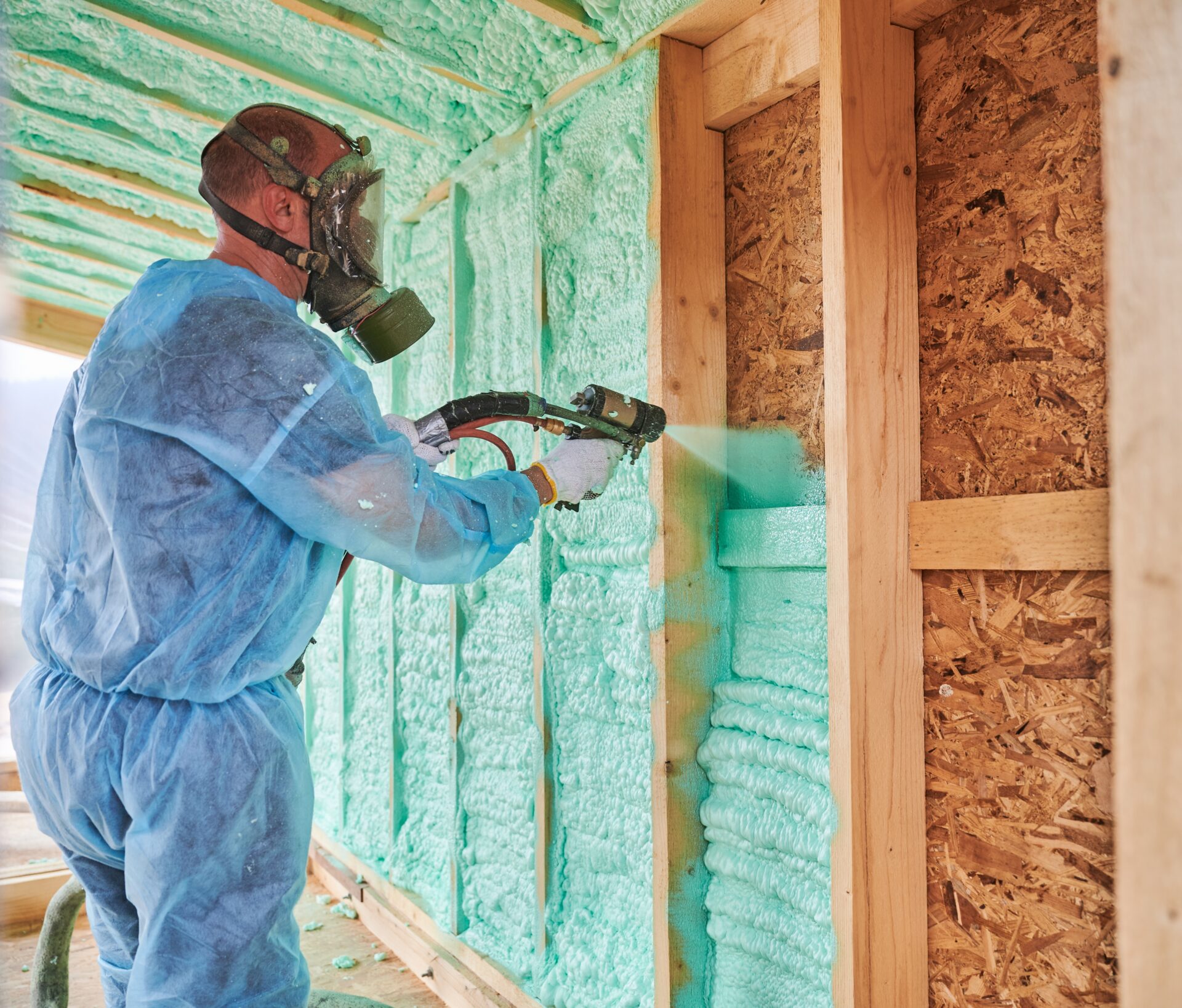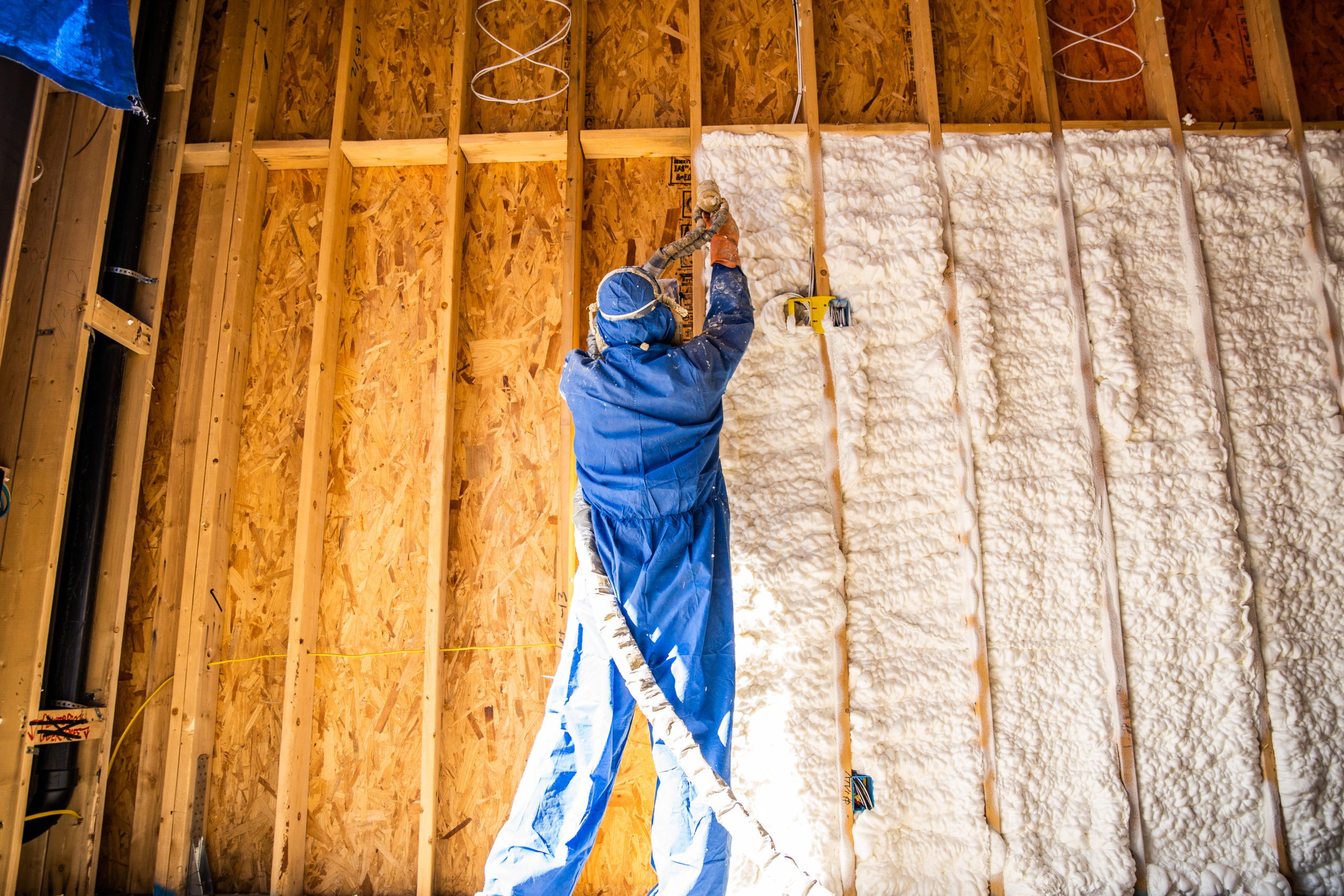How Spray Foam Can Improve Energy Effectiveness in Your Home
How Spray Foam Can Improve Energy Effectiveness in Your Home
Blog Article
Spray Foam: The Ultimate Service for Air Sealing and Insulation
Spray foam insulation has actually emerged as a leading remedy for reliable air securing and thermal insulation, using an one-of-a-kind mix of residential properties that set it apart from standard techniques. Comprehending the full scope of its benefits, installment procedures, and comparisons with other insulation kinds is critical for making educated choices.
What Is Spray Foam?
Spray foam is a functional insulation product that incorporates the concepts of air securing and thermal resistance to boost power performance in structures. Made up primarily of polyurethane or other comparable substances, spray foam is used as a fluid that expands upon call with surface areas, developing a strong, continuous layer of insulation. This special property permits it to load spaces, splits, and spaces that traditional insulation materials might ignore, providing a remarkable air seal.
There are two major kinds of spray foam: open-cell and closed-cell. Open-cell spray foam is lighter and a lot more versatile, providing excellent sound absorption and a reduced R-value per inch - Spray Foam. On the other hand, closed-cell spray foam is denser, giving a greater R-value, dampness resistance, and included architectural honesty to constructing components
The application process typically involves specialized equipment, guaranteeing a smooth application that abides by different substrates, consisting of wood, concrete, and metal. This adaptability makes spray foam ideal for both brand-new building and constructions and retrofitting existing frameworks. Its capacity to develop an airtight barrier significantly adds to reducing power consumption and boosting interior air top quality, thus making it a favored option among house owners and builders alike.
Benefits of Spray Foam Insulation
Among one of the most substantial benefits of spray foam insulation is its phenomenal capability to create a continual air barrier, which effectively lessens power loss. Unlike traditional insulation materials, spray foam expands to fill splits and voids, guaranteeing that air leakage is drastically decreased. This characteristic not only enhances energy effectiveness however additionally leads to lower utility bills over time.
Furthermore, spray foam insulation gives premium thermal resistance, contributing to a much more secure interior setting. Its high R-value per inch permits efficient insulation in restricted rooms, making it optimal for attics, walls, and crawl spaces. The moisture-resistant residential properties of spray foam help stop mold and mildew growth, promoting healthier living problems.
One more essential benefit of spray foam insulation is its sound-dampening high qualities (Spray Foam). It properly lowers sound transmission in between areas, developing a quieter and more comfortable home environment. The sturdiness of spray foam likewise attracts attention, as it does not droop or work out over time, preserving its performance throughout its life expectancy
Exactly How Spray Foam Functions
Recognizing exactly how spray foam insulation functions is crucial for valuing its performance in air securing and thermal resistance. Spray foam insulation includes 2 main components: isocyanate and polyol resin. When these parts are blended, they undergo a chain reaction that creates the material to expand swiftly, producing a dense foam that loads spaces, cavities, and cracks.
As the foam expands, it abides by surface areas, developing an airtight seal that considerably decreases air infiltration. This particular makes spray foam insulation very efficient at protecting against drafts and dampness infiltration, which can cause power loss and damages over time. Additionally, the closed-cell variation of spray foam offers remarkable thermal resistance as a result of its inflexible framework, effectively reducing warm transfer.
The special residential properties of spray foam enable it to satisfy irregular surfaces, making sure thorough insurance coverage and a smooth barrier. As a result, spray foam insulation click over here now not only improves energy performance but likewise adds to improved interior air top quality by reducing the buildup of irritants and toxins. Ultimately, understanding the mechanics behind spray foam underscores its role as an exceptional option for insulation and air sealing in both industrial and domestic applications.
Installment Refine Introduction

Prior to setup, the room has to be effectively cleaned and prepped, ensuring that surface areas are cost-free from particles, wetness, and dust. Since contaminants can jeopardize attachment and general efficiency, this action is critical. When the area is prepared, the application includes blending the two components of index the spray foam, which increases upon get in touch with and fills spaces effectively.
Trained experts need to perform the installment, making use of specialized devices to ensure uniform coverage and optimal density. Safety safety measures, including wearing protective gear and guaranteeing appropriate ventilation, are imperative throughout this procedure. After application, the foam generally remedies swiftly, developing a solid barrier that improves power performance.
Comparing Spray Foam to Typical Insulation
When reviewing insulation options, spray foam insulation stands out in comparison to traditional products such as fiberglass and cellulose. Unlike fiberglass and cellulose, which can allow air infiltration, spray foam expands upon application, loading gaps and holes to develop a closed seal.
In addition, spray foam offers a greater R-value per inch than conventional insulation types, supplying more reliable thermal resistance in a thinner account. This characteristic is particularly helpful in spaces with limited cavity depth. Moreover, spray foam is resistant to moisture and mold and mildew growth, which can be a substantial worry about cellulose and fiberglass, particularly in moist settings.
Nonetheless, spray foam insulation commonly brings a higher in advance cost than its traditional equivalents. Home owners should consider this first financial investment against long-lasting energy financial savings and efficiency benefits. Inevitably, while both insulation types offer their purpose, spray foam emerges as an advanced remedy for modern insulation needs, specifically in regards to air sealing and thermal effectiveness.

Conclusion
In summary, spray foam insulation represents a highly reliable solution for accomplishing optimum air sealing and thermal resistance. Its distinct residential properties, including wetness resistance and sound dampening, make it suitable for various applications in both new buildings and retrofitting jobs (Spray Foam). The preliminary expenses may be higher contrasted to typical insulation products, the long-lasting benefits, such as substantial power cost savings and improved interior air top quality, warrant the financial investment and emphasize its value in modern structure methods.
Spray foam insulation has arised as a leading service for effective article air securing and thermal insulation, providing a distinct combination of buildings that set it apart from traditional approaches.Spray foam is a flexible insulation material that incorporates the concepts of air sealing and thermal resistance to boost energy performance in structures.When examining insulation options, spray foam insulation stands out in contrast to standard materials such as fiberglass and cellulose. Ultimately, while both insulation kinds offer their purpose, spray foam emerges as an extra innovative option for contemporary insulation needs, particularly in terms of air sealing and thermal effectiveness.
In recap, spray foam insulation represents an extremely reliable option for accomplishing optimum air sealing and thermal resistance.
Report this page